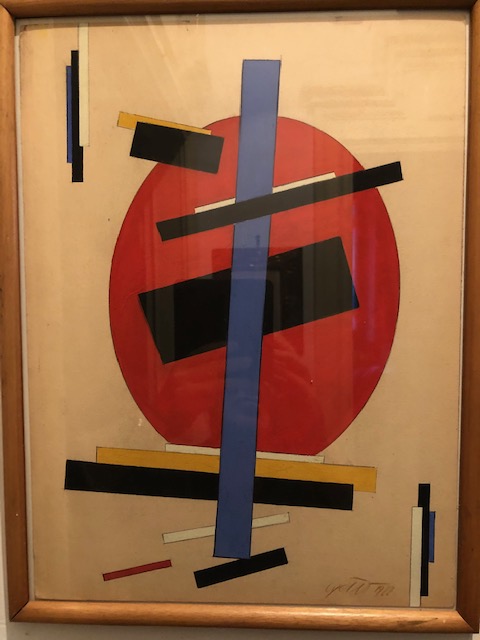Nicolay Suetin Suprematist leader
Amalgamates Suprematism and Constructivism
By Prof. Francesco Carelli
Nikolai Suetin ( 1897 – 1954 ) studied at the state workshops for fine art in Vitebsk, where he was involved in the UNOVIS (Champions of the New Art) group, founded by his teacher Kazimir Malevich, from 1920 onwards. At the revolutionary Vitebsk workshop Malevich, El Lissitzky, Suetin, Chashnik, and later Klucis worked together and without any recognisable distinction made between teacher and student on a goal no less ambitious than the “confirmation of Suprematism as the new constructivity of the forms of this world.
These were the years when the first signs of the transfer of Suprematism’s radical artistic ideas into architecture were developing. A style based on ‘non objective’ geometric shapes in alignment. In Vitebsk, from 1921, Suetin initially occupied himself primarily with the movement of Suprematist form in space. Works were created which call to mind a view from above on to Constructivist geometrical architectures and were received with great interest by El Lissitzky in particular. After the end of his artistic education, Suetin increasingly dedicated his attention to transferring the Suprematist aesthetic into the real world of post-revolutionary Russia. He was greatly occupied with developing the universal formal language of the non-objective into a new way of shaping the world. It amalgamates Suprematist and Constructive questions regarding space and surface with utopian architectural designs for cosmic habitats.
He lived in Petrograd from 1923, and worked at the State Lomonosov Ceramics Factory. He also worked at the State Petrograd Lomonossov Porcelain Plant (from 1922 until 1924), and at the Porcelain Plant in Government of Novgorod. Suetin was a member of GINKhUK ( the State Institute of Artistic Culture, from 1923 until 1926), where he worked at the experimental laboratory; then later at the Institute of Art History (from 1927 to 1930). From 1932 he was the Chief Artist at the artistic laboratory of the Leningrad Lomonossov Porcelain Plant, where he had been working for around a decade applying avant-garde patterns and artworks to porcelain.
He also worked as a book illustrator and exhibitions designer, where he maintained an avant-garde style despite the demands of Socialist Realism. Suetin was the chief artist and designer of the USSR pavilions for the World Exhibitions in Paris (1937), where he worked on the interiors for Boris Iofan‘s Stalinist pavilion and again in New York City, 1939. Nikolai Suetin is generally considered one of the leading Suprematist artists.



